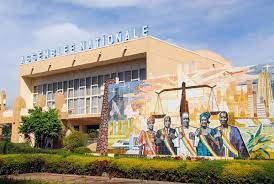This post discusses the Unicameral legislative body of Mali which is the National Assembly, it also explains the controversies of the assembly.
The National Assembly of Mali (French: Assemblée nationale du Mali) is the unicameral country’s legislative body of 147 voting members.
Members of the National Assembly, called deputies, are elected by direct universal suffrage for a five-year term, during which they enjoy parliamentary immunity. Members are directly elected in single-member districts using a two-round voting system where candidates must receive an absolute majority of votes in order to win.
Read:PAST PRESIDENTS OF MALI TILL DATE
The National Assembly (Assemblée Nationale) has 160 members, elected for a five-year term, 147 members elected in single-seat constituencies and 13 members elected by Malians abroad. The National Assembly is the sole legislative arm of the government. Representation is apportioned according to the population of administrative districts. Election is direct and by party list. The term of office is 5 years.

The Assembly meets for two regular sessions each year. It debates and votes on legislation proposed either by one of its members or by the government and has the right to question government ministers about government actions and policies. Eight political parties, aggregated into four parliamentary groups, are represented in the Assembly. ADEMA currently holds the majority; minority parties are represented in all committees and in the Assembly directorate.
The Assembly normally meets twice a year, on the first Monday in October for no more than 75 days and the first Monday in April for no more than 90 days. The Prime Minister or a majority of the members can call an extra session. If the session is held at the instigation of Assembly members, it must not exceed 15 days.
The 2013 elections were the first held after the 2012 Malian coup d’état which led to the overthrow of President Amadou Toumani Touré. The current National Assembly was formed following two rounds of parliamentary elections, held on 24 November and 15 December. The Rally for Mali (RPM) party and its allies were victorious, capturing 115 of the 147 seats. RPM Deputy Issaka Sidibé was elected President of the National Assembly on 22 January 2014.Nearly 85% of members are newcomers serving their first term.
13 of the 147 (8.8%) elected members are women, one less than the previous Assembly. On 12 November 2015, the National Assembly adopted a law requiring that at least 30% of elected or appointed officials must be women.
CONTROVERSIES
A 2009 amendment to the Malian Family Code which would have given women more rights was met by huge demonstrations by Muslims demanding it not be signed, following which President Toure sent the bill back to the parliament.
EXECUTIVE BRANCH
Under Mali’s 1992 constitution, the president is chief of state and commander in chief of the armed forces. The president is elected to 5-year terms by direct popular vote. He is limited to two terms. The president appoints the prime minister as head of government. The president chairs the Council of Ministers (the prime minister and currently 27 other ministers), which adopts a proposals for laws submitted to the National Assembly for approval of them.
LEGISLATIVE BRANCH
The National Assembly (Assemblée Nationale) has 160 members, elected for a five-year term, 147 members elected in single-seat constituencies and 13 members elected by Malians abroad. The National Assembly is the sole legislative arm of the government. Representation is apportioned according to the population of administrative districts. Election is direct and by party list. The term of office is 5 years.